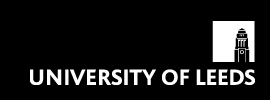
|

|
|
Previous meetings: Winter 08 session (including scans of participants' notes)
11th meeting: January 29th (Thursday) 2pm Mall 1
1. Robert Marsh: "Potts partition functions -- Concatenating graphs II."
12th meeting: Feb 5th (Thursday) 2pm Magic Room
1. Robert Marsh: "The Potts transfer matrix: rise of the
Temperley-Lieb algebras."
13th meeting: Feb 12th (Thursday) 2pm Mall 1
1. Robert Marsh: "The Potts transfer matrix:
Temperley-Lieb algebras II."
14th meeting: Feb 19th (Thursday) 2pm Mall 1
1. Robert Marsh: "The Potts transfer matrix:
Temperley-Lieb algebras III."
15th meeting: Feb 26th (Thursday) 2pm Magic Room
1. Peter Crompton: "The Tutte polynomial I."
References:
The Computational Complexity of some classical problems from Stat Phys (Welsh)
Inapproximability of the Tutte polynomial
(Goldberg)
The Computational Complexity of Tutte Invariants for Planar Graphs (Vertigan)
16th meeting: Mar 5th (Thursday) 2pm Mall 1
1. Peter Crompton: "The Tutte polynomial II: #P Strikes Back - Return of the Matroid"
17th meeting: Mar 12th (Thursday) 2pm Leeds Art Gallery (Main Lecture Theatre)
(*NOTE VENUE!*)
1. Jeanne Scott: "Laurent expansions for Plucker coordinates
via perfect matchings." (slides)
18th meeting: Mar 19th (Thursday) 2pm Mall 1
1. Peter Crompton: "Non-perturbative Quantum effects"
(Peter to Robert, on quivers in SM)
I have attached some stuff on the connections between quivers and
Statistical Mechanics for Thursday. I hope some of its helpful ...
0011192v3 - is a handwaving way to define a quiver in Physics
0503149v2 - is a way of defining Statistical Mechanics from quivers
jehp122005025 - is an explicit quiver for the Ising model
0302228v1 - is formally why duals aren't very well defined ideas in
(space+time) models of Physics. The mapping is known as
"Wick-rotation", and to further confuse the issue, Physicists
also interchange Euclidean-time with the temperature "beta"
in this context.
0610003v2 - is a bit more what I'm doing on "time", using a description of
9911114v1 the singularities associated with covering maps (space+time
-> space) called asymptotic freedom.
(Matt to Sathish, on temperature) ... (omitted -- hopefully Sathish's notes will abstract this)
Organisers: Sathish, Jeanne and Paul